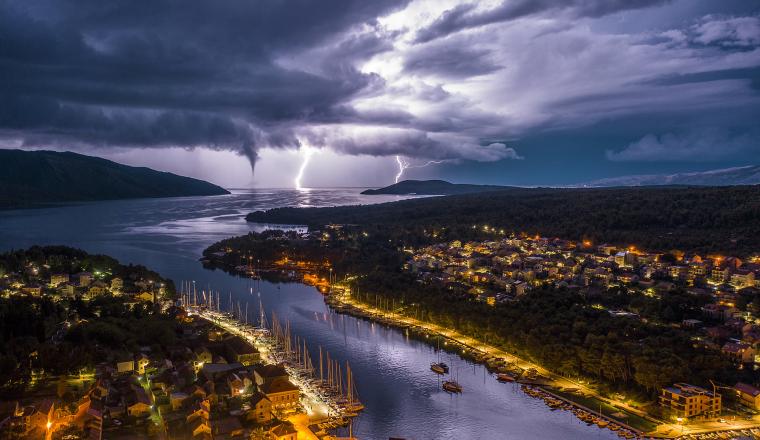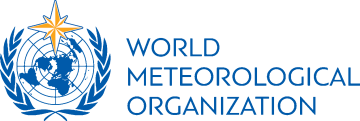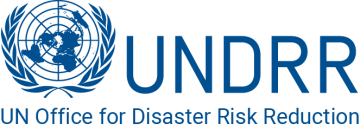Early Warnings for All
With human-induced climate change leading to more extreme weather conditions, the need for early warning systems is more crucial than ever. Systems that warn people of impending storms, floods or droughts are not a luxury but a cost-effective tool that saves lives, reduces economic losses, and provides a nearly tenfold return on investment.
Early warning systems have helped decrease the number of deaths and have reduced losses and damages resulting from hazardous weather, water or climate events. But major gaps still exist, especially in small island developing states and least-developed countries:
- 50% of countries worldwide report having adequate multi-hazard early warning systems
- Climate, weather and water-related extremes have led to 15 times more deadly hazards in Africa, South Asia, South and Central America, and small island states
- 70% of all deaths from climate-related disasters have occurred in the 46 poorest countries over the past 50 years
Early Warnings for All objectives and Action Plan
The Early Warnings for All initiative brings together the broader UN system, governments, civil society and development partners across the public and private sectors to enhance collaboration and accelerated action to address gaps and deliver people-centered, end-to-end multi-hazard early warning systems. Through coordination and collaboration, the initiative aims to build on and scale up existing efforts and capacities, promoting synergies among initiatives and partnerships across sectors to protect lives and livelihoods from natural hazards such as floods, heatwaves, storms and tsunamis.

Early Warnings for All Dashboard
2023 Progress Report
The four pillars of Early Warnings for All
The Early Warnings for All initiative is built on four pillars to deliver effective and inclusive multi-hazard early warning systems:
- Disaster risk knowledge - led by the United Nations Office for Disaster Risk Reduction (UNDRR)
- Detection, observation, monitoring, analysis, and forecasting - led by the World Meteorological Organization (WMO)
- Warning dissemination and communication - led by the International Telecommunication Union (ITU)
- Preparedness and response capabilities - led by the International Federation of Red Cross and Red Crescent Societies (IFRC)
Disaster Risk Knowledge
Detection, observation, monitoring, analysis and forecasting
Warning dissemination and communication
Preparedness and response capabilities
Early warning systems have proven to be a cost-effective and reliable solution to protect lives and livelihoods from natural hazards such as floods, heatwaves, storms and tsunamis. The Global Status Report (2022) reveals that countries with substantive-to-comprehensive early warnings coverage have disaster mortality eight times lower than countries with limited coverage. According to the Global Commission on Adaptation, giving just 24 hours’ notice of an impending hazardous event can reduce damage by 30 per cent. Investing just US$800 million in such systems in developing countries would prevent losses of $3 to $16 billion annually.
With 95 per cent of the world's population having access to mobile broadband networks and nearly 75 per cent owning a mobile phone, mobile networks have become powerful communication channels that can effectively target those in at-risk areas.
Videos
Global status of multi-hazard early warning systems 2023
The 2023 Global Status of Multi-Hazard Early Warning Systems report, analyses the latest data one year into the Early Warnings for All Initiative. Its findings reveal that 101 countries have reported having an early warning system, representing a doubling of coverage since 2015.
Words into Action: Multi-hazard early warning systems
Thanks to advancements in monitoring and forecasting and the strengthening of multi-hazard early warning systems there has been a decrease in the associated loss of life.
Advisory Panel
To ensure progress and the continued strategic alignment of activities with implementing bodies, the UN Secretary-General created the Early Warnings for All Advisory Panel, co-chaired by the Executive Heads of WMO and UNDRR, for the duration of the Initiative. The Advisory Panel consists of the Heads of a multitude of UN organizations, the private sector, civil society and UN Member States. Meetings of the Advisory Panel occur biannually, and the Panel prepares an annual progress report to the Secretary-General on the status of the Initiative’s activities.
The initiative is also engaging development partners through existing partnerships and coalitions such as the Alliance for Hydromet Development, the Risk-informed Early Action Partnership and other regional partnerships and alliances.





